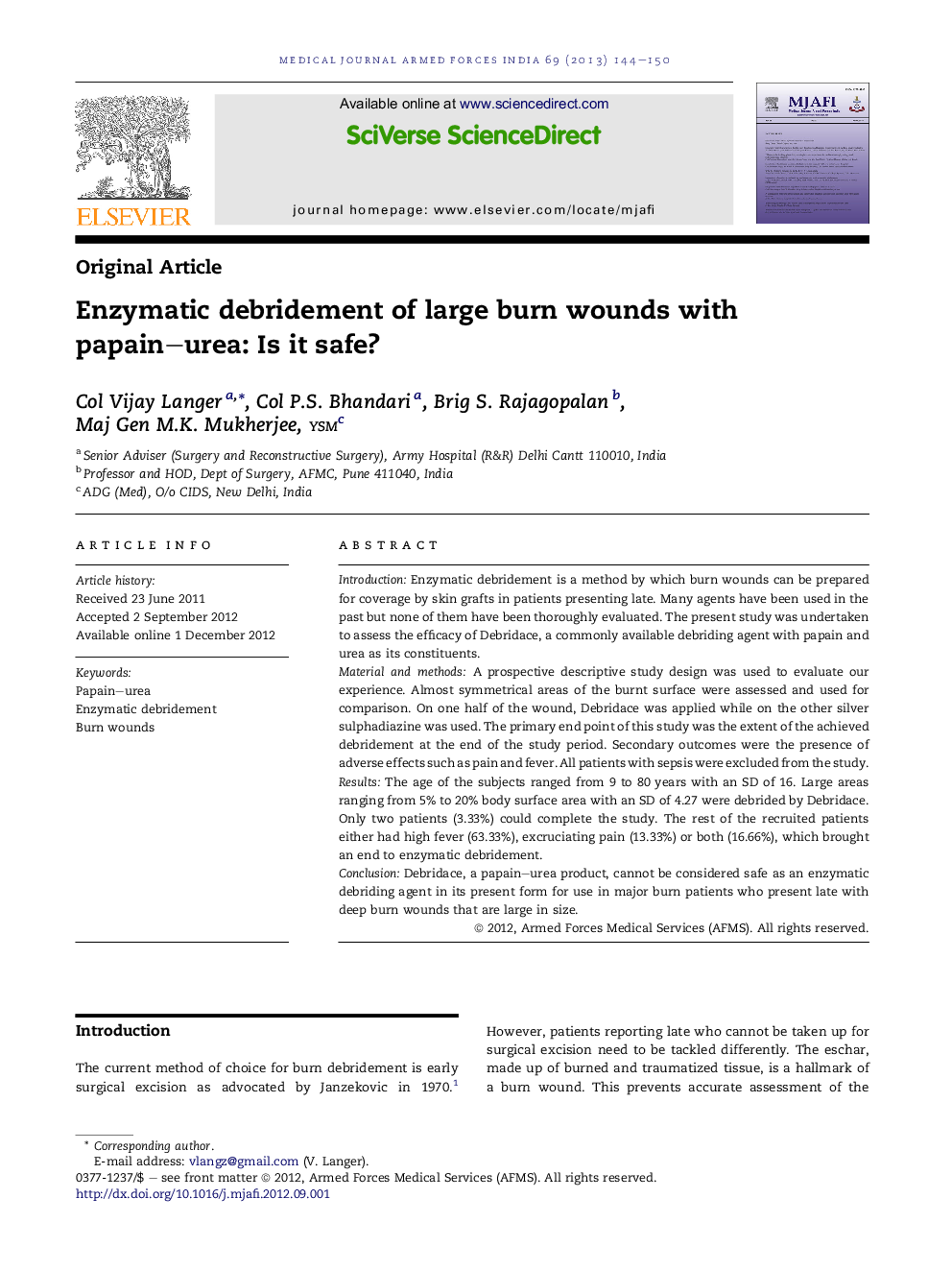| Article ID | Journal | Published Year | Pages | File Type |
|---|---|---|---|---|
| 3161306 | Medical Journal Armed Forces India | 2013 | 7 Pages |
IntroductionEnzymatic debridement is a method by which burn wounds can be prepared for coverage by skin grafts in patients presenting late. Many agents have been used in the past but none of them have been thoroughly evaluated. The present study was undertaken to assess the efficacy of Debridace, a commonly available debriding agent with papain and urea as its constituents.Material and methodsA prospective descriptive study design was used to evaluate our experience. Almost symmetrical areas of the burnt surface were assessed and used for comparison. On one half of the wound, Debridace was applied while on the other silver sulphadiazine was used. The primary end point of this study was the extent of the achieved debridement at the end of the study period. Secondary outcomes were the presence of adverse effects such as pain and fever. All patients with sepsis were excluded from the study.ResultsThe age of the subjects ranged from 9 to 80 years with an SD of 16. Large areas ranging from 5% to 20% body surface area with an SD of 4.27 were debrided by Debridace. Only two patients (3.33%) could complete the study. The rest of the recruited patients either had high fever (63.33%), excruciating pain (13.33%) or both (16.66%), which brought an end to enzymatic debridement.ConclusionDebridace, a papain–urea product, cannot be considered safe as an enzymatic debriding agent in its present form for use in major burn patients who present late with deep burn wounds that are large in size.
